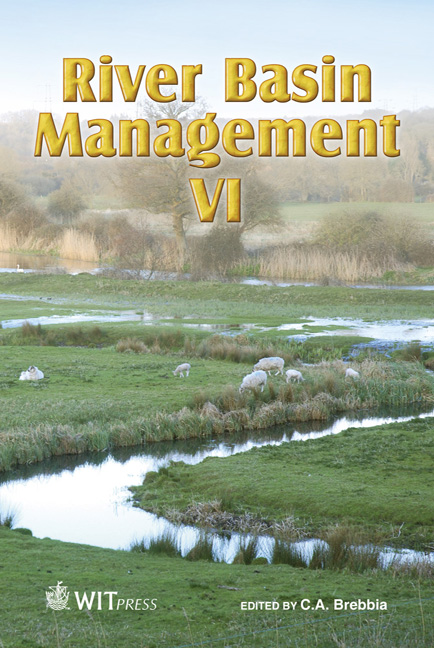Use Of A Distributed Catchment Model To Assess Hydrologic Modifications In The Upper Ganges Basin
Price
Free (open access)
Transaction
Volume
146
Pages
10
Page Range
177 - 186
Published
2011
Size
616 kb
Paper DOI
10.2495/RM110161
Copyright
WIT Press
Author(s)
L. Bharati, V. Smakhtin, P. Jayakody, N. Kaushal & P. Gurung
Abstract
Allocation of river water to cities, industries and agriculture has been a common practice in river basin planning and management. It is now widely accepted that water also needs to be allocated for aquatic environments – alongside the demands of other users. Discharge data are a pre-requisite for calculating such environmental demands – Environmental Flows (EF) – regardless of the EF assessment method used. This paper describes the application of a distributed hydrological model (SWAT) to simulate discharges, which were then used for EF assessment in the Upper Ganges River in India (total area: 87000 km2). The EF assessment was done using a multidisciplinary, multi-stakeholder approach (Building Blocks methodology). The EF method involved several stakeholder workshops with various expert groups and extensive field studies. This is the first time that a comprehensive EF assessment has been done in India. The characteristic feature of the study is that cultural and religious water demands were also incorporated into the assessment of EF requirements as the conservation of the river’s spiritual traits were recognized by the stakeholders as being as important as the maintenance of its ecological integrity. The assessment resulted in EF requirements ranging from 72% of Mean Annual Runoff (MAR) in the upper stretches to 45% of (MAR) in the lower stretches, which is coherent with the ecological and spiritual status of the reaches. Keywords: Ganges Basin, hydrological modeling, environmental flows assessment.
Keywords
Ganges Basin, hydrological modeling, environmental flowsassessment





